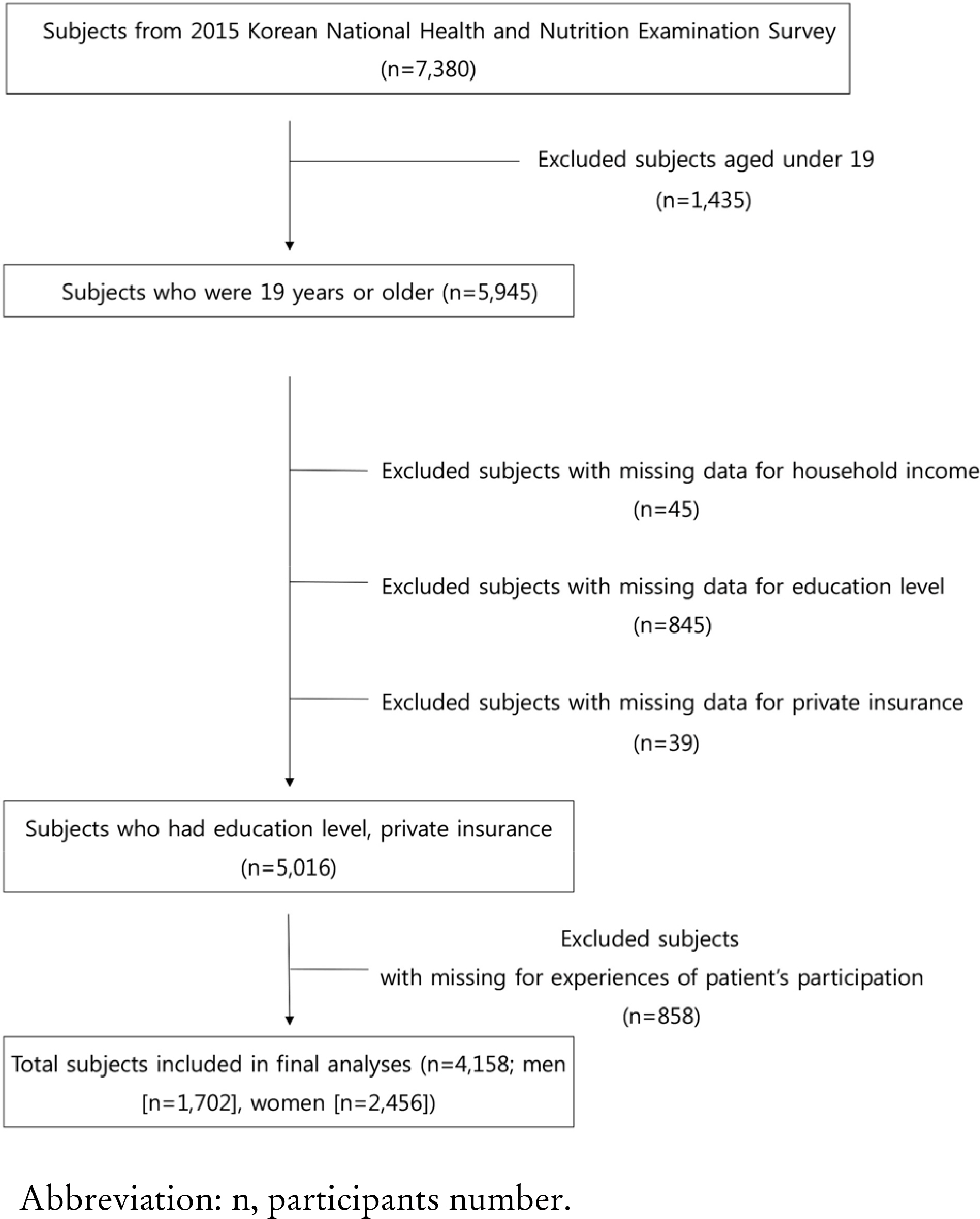References
1. Haynes RB, Taylor DW, Sackett DL. Compliance in health care Baltimore: Johns Hopkins University Press; 1979.
2. Becker MH, Maiman LA. Sociobehavioral determinants of compliance with health and medical care recommendations. Med Care 1975;13(1):10–24.
3. Becker MH. Patient adherence to prescribed therapies. Med Care 1985;23(5):539–55.
4. Jeong YY. Adherence: implications for asthma treatment. Allergy Asthma Respir Dis 2013;1(2):105–10.
5. DiMatteo MR, Sherbourne CD, Hays RD, Ordway L, Kravitz RL, McGlynn EA, et al. Physicians' characteristics influence patients' adherence to medical treatment: results from the Medical Outcomes Study. Health Psychol 1993;12(2):93–102.
6. Roter DL, Hall JA. Strategies for enhancing patient adherence to medical recommendations. JAMA 1994;271(1):80.
7. Wissow LS, Roter D, Bauman LJ, Crain E, Kercsmar C, Weiss K, et al. Patient-provider communication during the emergency department care of children with asthma. The National Cooperative Inner-City Asthma Study, National Institute of Allergy and Infectious Diseases, NIH, Bethesda, MD. Med Care 1998;36(10):1439–50.
8. Lee JH, Kim CJ. Effect of patient-centered communication of doctor on patient participation: focusing on moderating effect of trust. J of Korea Contents Association 2013;13(3):278–86.
9. Bell JA, Balneaves LG. Cancer patient decision making related to clinical trial participation: an integrative review with implications for patients' relational autonomy. Support Care Cancer 2015;23(4):1169–96.
10. Schanen JG, Iribarren C, Shahar E, Punjabi NM, Rich SS, Sorlie PD, et al. Asthma and incident cardiovascular disease: the Atherosclerosis Risk in Communities Study. Thorax 2005;60(8):633–8.
12. Coentre R, Talina MC, Góis C, Figueira ML. Depressive symptoms and suicidal behavior after first-episode psychosis: a comprehensive systematic review. Psychiatry Res 2017;253:240–8.
13. Kim SO. Medication adherence of elderly with hypertension and/or diabetes-mellitus and its' Influencing factors. Korean J Clin Pharm 2011;21(2):81–9.
14. Lee JS, Lee ES, Yang YJ, Yoon YS, Lee JH, Ji HA, et al. Comparison of characteristics between compliant and non-compliant for dyslipidemia treatment -using Korean national health and nutrition examination survey 2009~2012. Korean J Fam Pract 2015;5(3):S738–44.
15. Moon DS, An SM, Kim KH, Kim YJ, Lee SM, Paik JW. The factors associated with antidepressant adherence in outpatients with depressive disorder. Korean J Psychopharmacol 2015;26(2):35–42.
16. García-Pérez LE, Alvarez M, Dilla T, Gil-Guillén V, Orozco-Beltrán D. Adherence to therapies in patients with type 2 diabetes. Diabetes Ther 2013;4(2):175–94.
17. Sunwoo D, Song HJ, Hwang NM, Kang EJ, Seo YJ, Kim TI, et al. The development of health care system for older Koreans: reports 2005-04 Seoul: Korea institute for health and social affairs; 2005.
18. Singh JA, Sloan JA, Atherton PJ, Smith T, Hack TF, Huschka MM, et al. Preferred roles in treatment decision making among patients with cancer: a pooled analysis of studies using the control preferences scale. Am J Manag Care 2010;16(9):688–96.
19. Lee CN, Chang Y, Adimorah N, Belkora JK, Moy B, Partridge AH, et al. Decision making about surgery for early-stage breast cancer. J Am Coll Surg. 2012;214(1):1–10.
20. Zikmund-Fisher BJ, Couper MP, Singer E, Ubel PA, Ziniel S, Fowler FJ Jr, et al. Deficits and variations in patients' experience with making 9 common medical decisions: the DECISIONS survey. Med Decis Making 2010;30(5 Suppl):85S–95.
21. Hoffman RM, Elmore JG, Fairfield KM, Gerstein BS, Levin CA, Pignone MP. Lack of shared decision making in cancer screening discussions: results from a national survey. Am J Prev Med 2014;47(3):251–9.
22. Brom L, Hopmans W, Pasman HR, Timmermans DR, Widdershoven GA, Onwuteaka-Philipsen BD. Congruence between patients' preferred and perceived participation in medical decision-making: a review of the literature. BMC Med Inform Decis Mak 2014;14:25.
23. Sullivan DR, Golden SE, Ganzini L, Wiener RS, Eden KB, Slatore CG. Association of decision-making with patients' perceptions of care and knowledge during longitudinal pulmonary nodule surveillance Ann Am Thorac Soc 2017 May 10. [Epub ahead of print].
24. Levinson W, Kao A, Kuby A, Thisted RA. Not all patients want to participate in decision making. A national study of public preferences. J Gen Intern Med 2005;20(6):531–5.
25. Chewning B, Bylund CL, Shah B, Arora NK, Gueguen JA, Makoul G. Patient preferences for shared decisions: a systematic review. Patient Educ Couns 2012;86(1):9–18.
26. Keating NL, Guadagnoli E, Landrum MB, Borbas C, Weeks JC. Treatment decision making in early-stage breast cancer: should surgeons match patients' desired level of involvement? J Clin Oncol 2002;20(6):1473–9.
27. Clayman ML, Bylund CL, Chewning B, Makoul G. The impact of patient participation in health decisions within medical encounters: a systematic review. Med Decis Making 2016;36(4):427–52.





